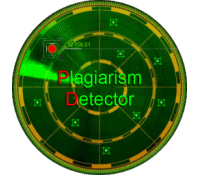Conflict of Interest in Public Procurement
A Case Study of Indonesia’s Government Institution XYZ
DOI:
https://doi.org/10.30737/jimek.v7i1.5638Keywords:
Conflict of Interest, Procurement, Government InstitutionAbstract
This research aims to analyze the implications of conflicts of interest in procurement activities within Indonesian government institutions, focusing on motives such as personal gain, nepotism, and political influence on Procurement Committees. The study conducted interviews with seven procurement committees in a government institution in Indonesia. The findings indicate that the acceptance of personal gain significantly affects the procurement process, as the authority held by procurement committees provides opportunities to exploit gaps in each procurement process. Additionally, nepotism leads to biased decisions by the procurement committee, resulting in deviations from established procedures. Meanwhile, political influence on procurement committees, both directly and indirectly, poses a risk of intervention that disrupts the procurement process from planning to the determination of winners. Furthermore, based on Cause-Effect Diagram analysis, it was found that factors such as low individual moral principles, suboptimal inherent supervision, and the lack of stringent sanctions against fraudulent actors are the main triggers of conflicts of interest in the procurement process. Proposed improvements include the implementation of moral principles to encourage individuals involved in procurement to prioritize institutional interests and the involvement of internal supervisors in every stage of the procurement process to help identify signs of fraud or "red flags" that arise during the process.
References
Abdussamad, Z. (2022). Buku metode penelitian kualitatif. St. Louis: Federal Reserve Bank of St Louis.
Andvig, J.C., Fjeldstad, O., Amundsen, I., Sissener, T.K., & Søreide, T. (2001). Corruption A Review of Contemporary Research.
Akomah, B.B., & Nani, G. (2018). Redefining Corrupt Public Procurement Practices in Ghana Based on Stakeholders’ Perception. International Journal of Innovative Research and Development.
Campos, J. E. & Pradhan, S.(2007). The many faces of corruption: tracking vulnerabilities at the sector level. Washington, DC: The International Bank for Reconstruction and Development/World Bank.
Corruption Eradication Commission (2017), “Kajian pencegahan korupsi pada pengadaan barang dan jasa pemerintah (study of prevention of corruption in procurement of government goods and services)”
Cieslewicz, J.K. (2012), “The fraud model in international contexts: a call to include societal level influences in the model”, Journal of Forensic and Investigative Accounting, Vol. 4 No. 1, pp. 214-254.
Creswell, J.W. (2017). Research Design (Pendekatan Metode Kualitatif, Kuantitatif, dan Campuran).
Creswell, J. W., & Miller, D. (2000). Determining validity in qualitative inquiry. Theory Into Practice, 39(3), 124–130.
Downloads
Published
Issue
Section
License
Copyright (c) 2024 Atika Yanel Fauziah, Jonathan Marpaung

This work is licensed under a Creative Commons Attribution-NonCommercial-ShareAlike 4.0 International License.
Deprecated: json_decode(): Passing null to parameter #1 ($json) of type string is deprecated in /home/ojs.unik-kediri.ac.id/public_html/plugins/generic/citations/CitationsPlugin.php on line 68









